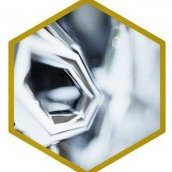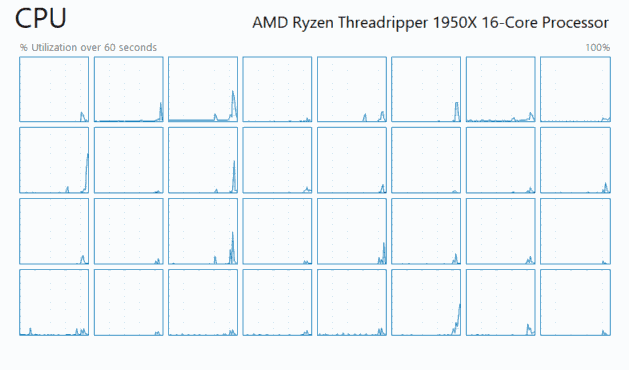-
Posts
791 -
Joined
Everything posted by verysame
-
I see, you also need to work fast, which is not only a matter of performance and reliability but also workflow. Well, the test I did in the previous post was with a very small file of only 30 Mb, a few layers, a couple of adjustment layers and yet, the performance was horrible. My edit is mainly comprised of 3D renders, with all the passes needed on top of the starting editing in order to make it less digital and more photographic: depth of field, grain simulation, color grading, etc, all components of my work. I wouldn't expect Affinity to provide a serious depth of field plugin, Frischluft alone costs $199, so for me, the depth of field filters in Affinity is useless. But I had great expectations for the 32-bit editing, unfortunately, plagued by a bug which has never been fixed, so pretty much useless too. As for the RAW editing I gave up on that front too. I was going to buy Capture 1, but then I tried Darktable and I must admit I'm quite impressed. Not as user-friendly perhaps and not as fast, but in my case, I do RAW editing for passion, not for work, I can deal with tinkering in DT. I know people sometimes mention the "right attitude" to find workarounds and solutions, not that I haven't figured out stuff in Affinity myself and came up with "creative ideas". But in the end, the number of workarounds made the use of Affinity irrelevant at that point. Also, when you need to work fast, workarounds can only slow you down, period. The screen capture utility I used is ScreenToGif , pretty handy. It comes with a portable version as well.
-
We are pretty much in the same boat. I think I read you also need to work fast on quite heavy compositions, same situation here. I had a lot of expectations when Affinity came out for Windows. I then realized that I couldn't expect a full working PS replacement right away. Then I realized I also had to come up with several workarounds if I wanted to get the job done, which is OK to some extent. I never say no when it comes to finding alternatives, as long as they don't affect my productivity down the road. Then I learned there were also shortcomings to deal with and sometimes they really do affect the productivity significantly. Lastly, there was the stability/performance issue, and at that point, I said that's it. Just as a comparison, here are a couple of screengrabs from the Task Manager, one using PS the other using Affinity. For the record, in PS I'm editing a half gigabyte image (2480 x 1420 px), and in Affinity a 30 MB image (520 x 520 px). In both cases, I'm adding a few adjustment layers, mostly curves and HSL, that's it. In PS I can keep editing and do more elaborate work, the load on the CPU is still quite the same.
-

Merge Shapes
verysame replied to Artcraft's topic in Pre-V2 Archive of Desktop Questions (macOS and Windows)
Then do what I did in the gif I posted above. -

Merge Shapes
verysame replied to Artcraft's topic in Pre-V2 Archive of Desktop Questions (macOS and Windows)
-

Affinity products for Linux
verysame replied to a topic in Feedback for the V1 Affinity Suite of Products
I didn't. -

Affinity products for Linux
verysame replied to a topic in Feedback for the V1 Affinity Suite of Products
I have been using Win7 for a long time and never wanted to switch to Win10. I bought a new computer and Win10 was pre-installed. I must admit, the best OS experience ever among the one I have used, from MacOS to Win (from 3.1 on). For the first time, I really don't have to think about the OS, cleaning, maintenance, etc. The OS feels definitely faster, more responsive than any other Windows I used and the integration between Cortana, Edge and the other devices (in my case my Note8) it's a very handy feature. Last but not least, despite a few left over from the previous OS, the interface is finally pleasant. -

Affinity products for Linux
verysame replied to a topic in Feedback for the V1 Affinity Suite of Products
I was referring to the forum. -

Affinity products for Linux
verysame replied to a topic in Feedback for the V1 Affinity Suite of Products
Not really, the requests for a Linux version are definitely the highest. Luckily there are alternatives for DAM, Video Editors, etc. Actually, I'm using a DAM on Win10 developed for Linux first -

Affinity products for Linux
verysame replied to a topic in Feedback for the V1 Affinity Suite of Products
I'm not aware of a similar amount of requests for MS Office for Linux: Linux has already many alternatives and it seems they work just fine. As for Photoshop, I don't think Linux users are interested in such a thing, the price tag would be definitely higher and I guess the subscription model is not appealing. I think the reason why so many Linux users are here is mainly for the cost. Anyway, was just an idea since the numbers of requests are really high here. -

Affinity products for Linux
verysame replied to a topic in Feedback for the V1 Affinity Suite of Products
I didn't know the user base was already a million. Where can I see that information? To be fair, the same goes for the users who bought APhoto and ADesigner considered the limited resources being assigned to Publisher as well unless it's a different team which, from a Linux user standpoint, begs the question then why not a Linux team? I'm not interested, by the way, I'm not a Linux user, just playing the devil's advocate here. Anyway, maybe an official statement on Serif's website on why Serif is not interested in developing a Linux version would help the communication. -
I agree about the FOSS spirit: often very promising software don't go far because there are too many ideas, some implemented, some only partially, no serious thinking about the UI, a messy community, etc. That’s the price we have to pay (pun intended) for free software. Nonetheless, sometimes there are true gems which not only compete with commercial software, but easily beat them. Like you said, with C1 (which is a software that I like a lot by the way) you only need a few tweaks and the image looks great. With FOSS software this is not always true and the user has to get through theory and several steps before he can get similar results. But that’s the thing, it means learning from scratch rather than relying on automatisms. When I started with Cinema 4D my idea of 3d was to use pre-built models, adding some deformation and continuing from there. With Blender 3D I had to learn how to properly model, which now is a valuable asset for my profession and something I can take advantage of, no matter what 3D software I’m using. With DT I’m going through a similar process: I’m really enjoying its modules, the equalizer is awesome, as well as the color zones, the logarithmic curve, and many others. It definitely takes more time compared to C1, but after all now that I’m getting used to it that is not always true. I find some things even faster in DT (the crop tool, for instance), other things equally powerful (masking). That said, if you are a pro who needs to edit many photographs in a short amount of time, then C1 makes perfect sense. Funny you mention the similarities with LR, that was the first thing I noticed and it almost stopped me from using it. I never liked LR, and I don’t think I’ll ever will. But luckily the similarities between DT and LR are only superficial, they really are two different software. I totally agree about the color science of some manufacturer, you could easily call me a Fuji fanboy. As for Affinity Photo our relation didn’t end well. It’s just sitting there, I don’t open it anymore. It’s very similar to a FOSS project that has never grown, it’s like a Frankenstein software.
-
Actually, you have to if you want to be entitled to talk about it. No one could use anything different from Illustrator if he's doing animation with After Effects and vectors. Let me rephrase it: no one in his/her mind would do that. So, you might be able to find someone who went completely nuts and who love spending days in pain, but if that person reached that level of craziness no one would hire him considered it would take him an insane amount of time to finish the job, hence he wouldn't be working in this industry.
-
Hm... the UI is one of the things that didn't impress me. As for the speed (that's how I interpret "smooth", but correct me if I'm wrong), I have no problems with DT. Same for the professional, DT offers really advanced features (masking is truly powerful). RT is even more advanced but the UI is a mess. Digikam is fast as well. Anyway, ON1 could never land on my PC, is a no-no when it comes to Fuji cameras which is what I use. That said, I know many enjoy it and that's what matters, having fun with the software we pick. That offer is good indeed.
- 29 replies
-
- raw
- photography
-
(and 2 more)
Tagged with:
-
I'm curious, in which way? I have only used the old free PS plugin a while back, which was OK. Then I tried the 2018 version and I wasn't impressed, it almost felt like a regression.
- 29 replies
-
- raw
- photography
-
(and 2 more)
Tagged with:
-
Since I use Darktable specifically for raw development, I guess I don't have a thorough understanding of its DAM capabilities, but there are things that don't seem to work for me like when in Lighttable, the UI has no scrollbar, thus if you are browsing lots of images it gets annoying (I just import the folder I need to work on and I'm good to go); no direct import from the memory card; not a big fan of the metadata panel. But I do like the group function. Digikam: import directly from memory card with the option to create folders on the fly based on the file date creation. The import window can be organized by groups, based on the date. Tagging is quite clear and easy to manage. The Search dialog offers a good amount of options. There are also Geolocation, Duplicate images, and other features (batch operations, exporting/uploading to different services, and so on) but honestly, I never used them. Lastly, being Digikam dedicated to image library management, the overall experience in terms of DAM if smoother and faster than DT, at least here on my PC.
- 29 replies
-
- raw
- photography
-
(and 2 more)
Tagged with:
-
+1 for darktable I use it with digikam which is great for cataloging. I'm also adding rawtherapee, not very user friendly but extremely powerful.
- 29 replies
-
- raw
- photography
-
(and 2 more)
Tagged with:
-
If I remember correctly it wasn't exactly a fix but a workaround. Not sure if the solution was to use a different camera profile or ETTR, or a combination of both. If you Google "Sony camera highlight blue peaking issue" one of the result should point you to dvxuser forum. There's a long thread about this and at some point the workaround is mentioned. Let me know if you don't find and I'll look up.






